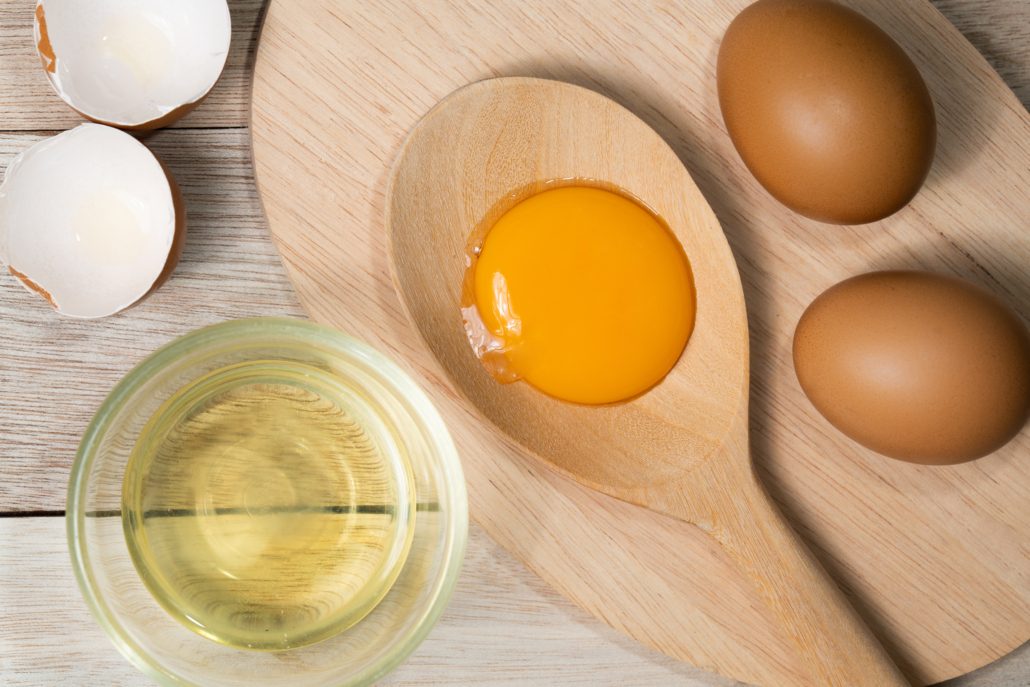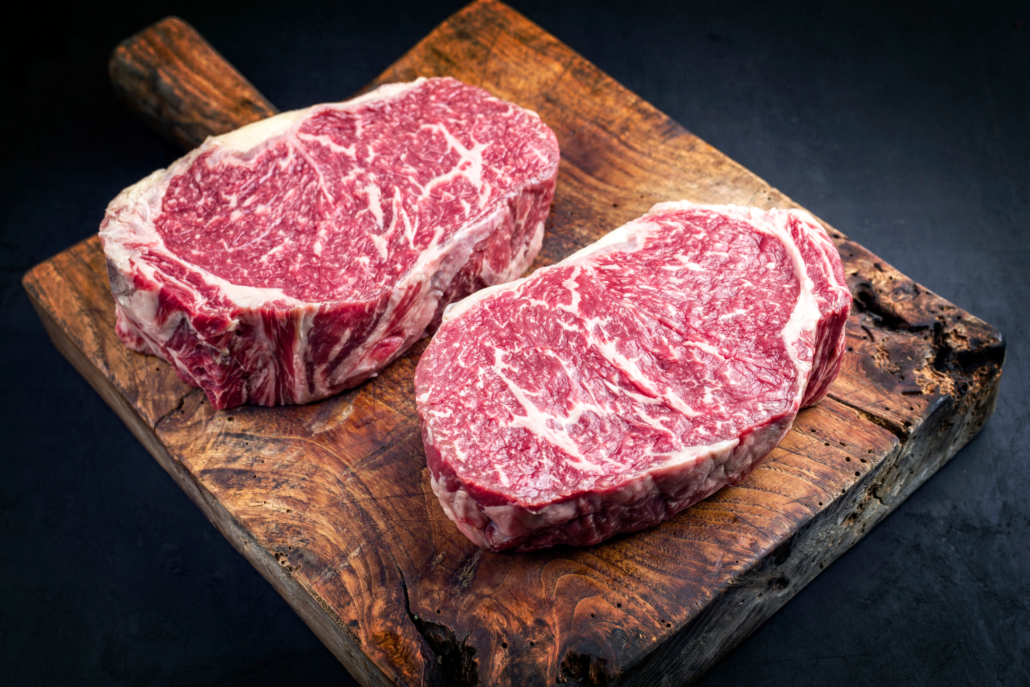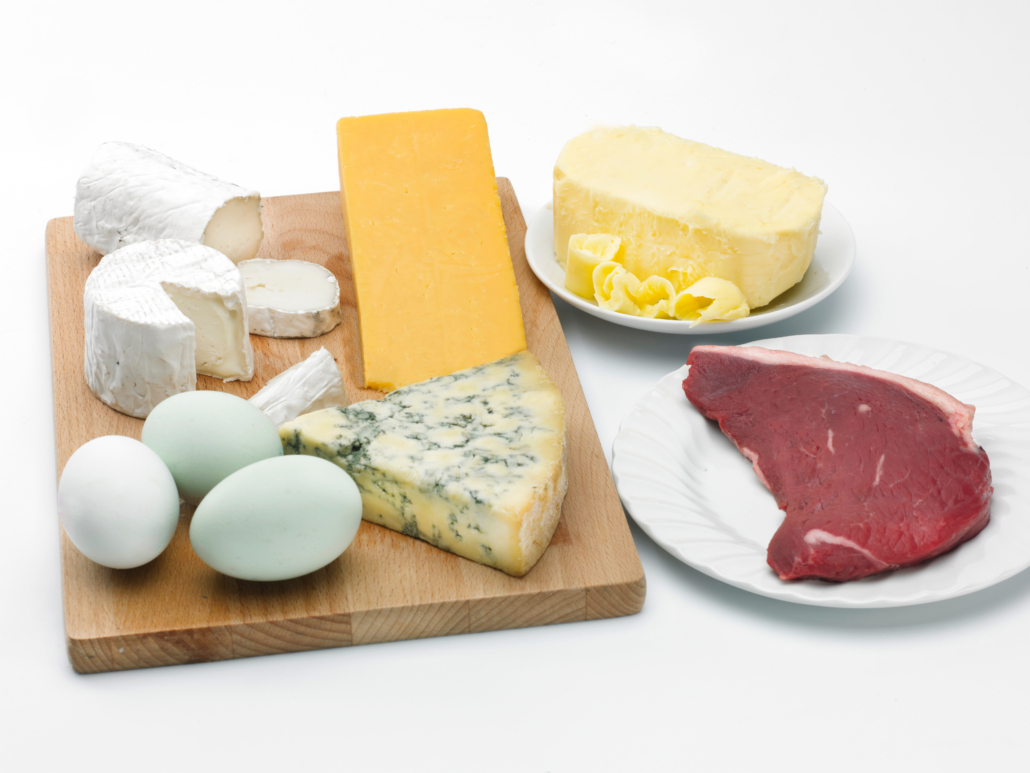We include products in articles we think are useful for our readers. If you buy products or services through links on our website, we may earn a small commission.
8 Organ Meat Recipes to Try Next
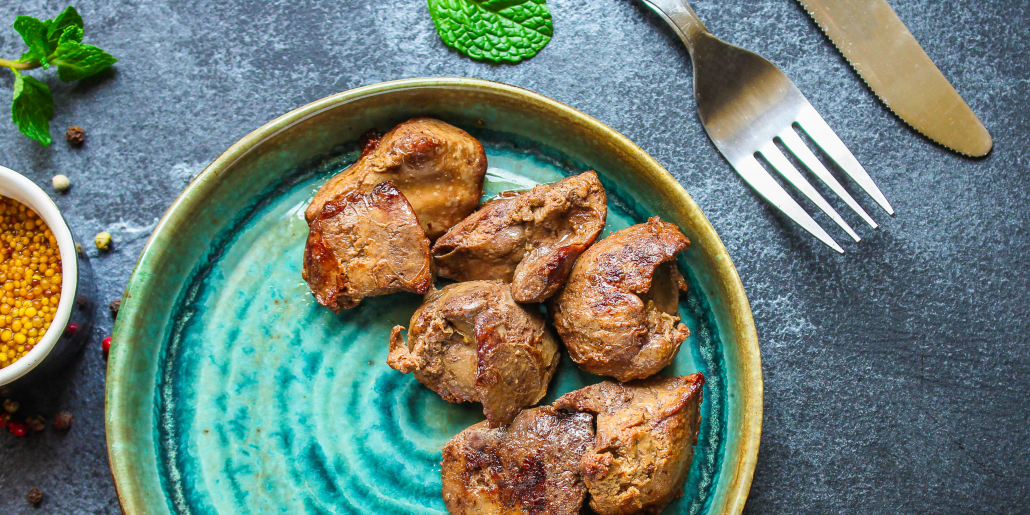
Most of us have grown up seeing and eating only muscle meats, which means the idea of nose-to-tail eating can feel downright strange. That’s why when it comes to these organ meat recipes, your mindset is key.
Did you know that thoughts are things? The way you think about organ meats will go a long way in determining how you experience them. We encourage you to view the process of cooking with organ meats as a return to how humans have evolved to eat.
If you’re going to get started with organ meats, see if you can find a curiosity and desire to try new things for the sake of your health and longevity.
Let’s take a look at 8 traditional organ meat recipes designed to help you get comfortable with the most nutritious foods on earth.
Table of Contents
Liver recipe: Liver and onion meatballs
“Liver has ranked above all other offal as one of the most prized culinary delights,” proclaims a 1974 book called Innards and Other Variety Meats. “Its heritage is illustrious — whether savored by young warriors after a kill or mixed with truffles and cognac for fine patés de foie gras.”
In addition to being one of the most treasured organ meats, liver is also one of the easiest organs to get started with. As long as you cook it right! The below organ meat recipe should help with that.
Liver and onion meatballs
This entry-level organ dish is simple and satisfying.
The ingredients:
- 1 lb ground beef
- 1/4 lb beef liver (finely chopped/minced)
- 1 tablespoon garlic powder (optional)
- 1/2 teaspoon cinnamon (optional)
- Salt and pepper to taste
The process:
- Preheat your oven to 350.
- Combine ground beef and beef liver by hand in a large mixing bowl.
- Mix in garlic powder, cinnamon, black pepper, and salt.
- Form the meat into meatballs (approximately 1-2 ounces each).
- Place meatballs in a baking dish and bake for 20 minutes.
- Let cool slightly, then enjoy!
Extra tip:
If you’ve tried this recipe and still find liver’s taste a little too bitter, soaking it in raw milk for roughly 8 hours beforehand should fix things.
Tongue recipe: beef tongue taco salad
Tongue is actually more of a muscle than an organ. Compared to other organ meats, beef tongue takes some extra preparation. But we think you’ll find its rich and fatty flavor more than worth it.
Thankfully for all of us, the Mexican culture got beef tongue prep down long ago. This organ meat recipe is a keto-friendly take on traditional tacos, which — believe it or not — are made with tongue.
Beef tongue taco meat
Classic tacos with a keto twist.
The ingredients:
- Beef tongue (1 tongue)
- Salt and garlic to taste
- Bay leaf
The process:
- Place the beef tongue in a slow cooker and cover it full with water.
- Add your garlic, bay leaf, and salt.
- Cover and cook on “low” for 8 hours (try doing this overnight).
- Remove the tongue and shred it into strands with a fork.
- Season with extra salt.
- Bonus step: fry your portion of tongue in some grass-fed suet.
- Enjoy!
Heart recipe: beef heart steak
Heart, like tongue, is both an organ meat and muscle meat. The heart was a favorite organ of many native American cultures.
Heart is also ideal for those new to organ meats. It looks and tastes less organ-y than many other options — especially when prepared as follows.
Beef heart steak
Quick, simple, and practically guaranteed to keep steak-lovers happy.
The ingredients:
- 1 beef heart (~4 pounds)
- 2 tablespoons grass-fed ghee
- Apple cider vinegar
- butter oil (optional)
- Salt and pepper to taste
The process:
- Slice your beef heart into pieces from top to bottom. Remove any veins.
- Don’t remove the fatty covering — it’ll prevent your steaks from getting too dry later.
- Place slices into apple cider vinegar and marinate for at least 8 hours.
- Remove heart slices from the vinegar and pat them dry.
- Heat a skillet with ghee for roughly one minute, or until you hear sizzling.
- Place heart slices onto the skillet. They should really sizzle!
- Cook slices for 5 minutes, then flip.
- Remove from heat when slices are golden brown on the outside but still rare in the middle.
- Drizzle with butter oil.
Kidneys recipe: Kidneys in butter-mustard sauce
The official role of an animal’s kidneys may be to filter blood, but when it comes to delicious cuisine, the kidneys serve a different role entirely.
For this recipe, we’ll be taking some inspiration from a culture that has arguably the richest culinary history of them all: the French.
Kidney in butter-mustard sauce
This Julia-Child-inspired recipe provides a look at French cuisine’s best.
- 1 beef kidney
- 4 tablespoons softened butter
- 1/2 cup dry white wine
- 2 tablespoons dijon mustard
- 1 tablespoon lemon juice
- Salt and pepper to taste
The process:
- Place 2 tablespoons of softened butter and the mustard in a ramekin and mix well.
- Prepare the kidney by trimming off excess fat and connective tissues.
- Heat your other 2 tablespoons of butter in a pan over medium-high heat.
- After the butter has stopped foaming, add the whole kidney to the pan.
- Cook for ~10 minutes, and be sure to turn the kidney over several times.
- Leaving the heat on, remove the kidney from the pan and set aside.
- Add wine and lemon juice to the pan and bring it to a boil.
- Once roughly half the liquid has boiled off, remove the pan from the heat.
- Add the mustard butter into the pan and stir well..
- (When in doubt, just add more butter!)
- Add your kidney back to the pan, which is now home to a rich sauce.
- Remove everything from heat and enjoy.
Brain recipe: Brains and eggs
Composed of roughly 60% fat, the brain is the fattiest organ in the entire body.
And all that fat means it’s easy to cook with. Brain is considered a delicacy in many cultures. This recipe capitalizes on the brain’s supple texture and flavor by pairing it with soft-cooked eggs.
Brains and eggs
An Eastern Kentucky throwback, brains, and eggs are nutritious and deeply satisfying.
The ingredients:
- I set brains
- 6 eggs (free-range if possible)
- 2 tablespoons butter
- Salt to taste
The process:
- Wash the brain and remove all of its outer membranes.
- Soak the brain for 1 hour in a pot of salted, cold water.
- Pour the water out, but keep the brain in the pot.
- Add fresh cold water and bring the brain to a boil.
- Boil for ten minutes, stirring occasionally.
- Drain the pot, then plunge the brain into cold water to cool.
- Remove the brain from water and slice it into thin pieces.
- Place cooked brain into a mixing bowl with eggs.
- Place butter onto a heated skillet.
- Pour the brains and eggs into the skillet, stirring often.
- Cook until eggs are just barely “set up.”
- Enjoy!
Sweetbreads recipe: Crispy sweetbreads
Sweetbreads probably aren’t what you think they are. They’re not especially sweet nor bready. The term sweetbread actually refers to an animal’s thymus and pancreas! Don’t let that scare you, though —this organ meat recipe makes sweetbreads quite palatable.
Crispy sweetbreads
The organ meat equivalent to friend chicken.
The ingredients:
- Sweetbreads
- 4 tablespoons suet or duck fat
- ¼ cup coconut flour
- 1 tablespoon of red wine vinegar
- Salt to taste
The process:
- Bring a pot of water to a boil.
- Turn the heat down slightly, then stir in salt and red wine vinegar.
- Immediately add your sweetbreads, then cook for 10 minutes.
- Drain the sweetbreads and run them under cold water until cooled.
- Dry the sweetbreads off with a paper towel, then transfer them to a clean plate.
- Place another plate on top of the sweetbreads, weighing it down with cans, packages of frozen beef, or anything else with some heftiness to it!
- Once flattened, cut your sweetbreads into half-inch slices.
- Place slices into a bowl and coat with coconut flour.
- Heat 4 tablespoons of duck fat over medium-high heat in a large skillet.
- Add half the sweetbreads and fry for 3-5 minutes until golden brown.
- Flip sweetbreads over and fry for 2-3 minutes until golden brown on the other side.
- Transfer the sweetbreads to a plate, add the second batch of sweetbreads to the skillet, and repeat the process.
- Enjoy!
Tripe recipe: Haggis
Tripe is the lining of an animal’s stomach — most frequently a cow’s. Tripe and other innards were prized among Native American tribes, and they continue to be prized in many international cuisines today.
This recipe is Scotland’s most famous dish: haggis. Haggis is a type of savory pudding made out of lamb or sheep’s offal, spices, onions, and suet. This tasty blend is then cooked inside an animal’s stomach.
Haggis
Our plant-toxin-free version of haggis might be almost as good as the original.
The ingredients:
- 1 sheep stomach
- 1 sheep liver
- 1 sheep heart
- 1 sheep tongue
- 1/2 pound suet, minced
- 1 teaspoon nutmeg
- 1 teaspoon coriander
- 1 teaspoon allspice
- ¼ teaspoon cinnamon
The process:
- Rinse the stomach and soak in cold, salted water overnight.
- Rinse the other organs: liver, heart, and tongue.
- Cook all organs (except the stomach!) in a large pot over medium heat for 2 hours.
- Remove organs, then mince them.
- Combine all minced organs in a large bowl. Stir in salt and spices.
- Remove the stomach from its water bath and fill it 2/3rds of the way with this mixture. Sew or tie the stomach closed.
- Use a fork to put a few small holes in the stomach. (This will keep the haggis from bursting later.)
- Gently place the filled stomach in a large pot of boiling water and cook it over high heat for 3 hours.
- Tada! You’ve got haggis. Let it cool slightly, then enjoy.
Bone marrow recipe: Roasted bone marrow
“The Victorians were right,” Jennifer McLagan said in her 2005 cookbook, Bones. “[Bone marrow] is a health food and definitely way too good for the dog.”
It’ true: bone marrow is basically a fat-bomb of nutritional goodness. It’s easy to prepare, easy to cook, and easy to enjoy. Just make sure you have a special marrow spoon to partake of it with.
Roasted bone marrow
The ingredients:
- 4 marrow bones
- Salt to taste
The process:
- Fill a large bowl with cold, salted water.
- Add the marrow bones and refrigerate for 12-24 hours.
- Drain the bones and pat them dry. (Be sure to roast the now-soaked marrow bones within 24 hours.)
- Preheat your oven to 450°F.
- Place the marrow bones on a roasting pan and roast for 15-25 minutes. Look for the marrow to start puffing slightly.
- Test to see if the marrow bones are done by sticking a metal skewer into the center of the bone. Remove the skewer and quickly touch it — it should be very hot.
- Serve the roasted bone marrow right away, and have fun using your fancy marrow spoon!
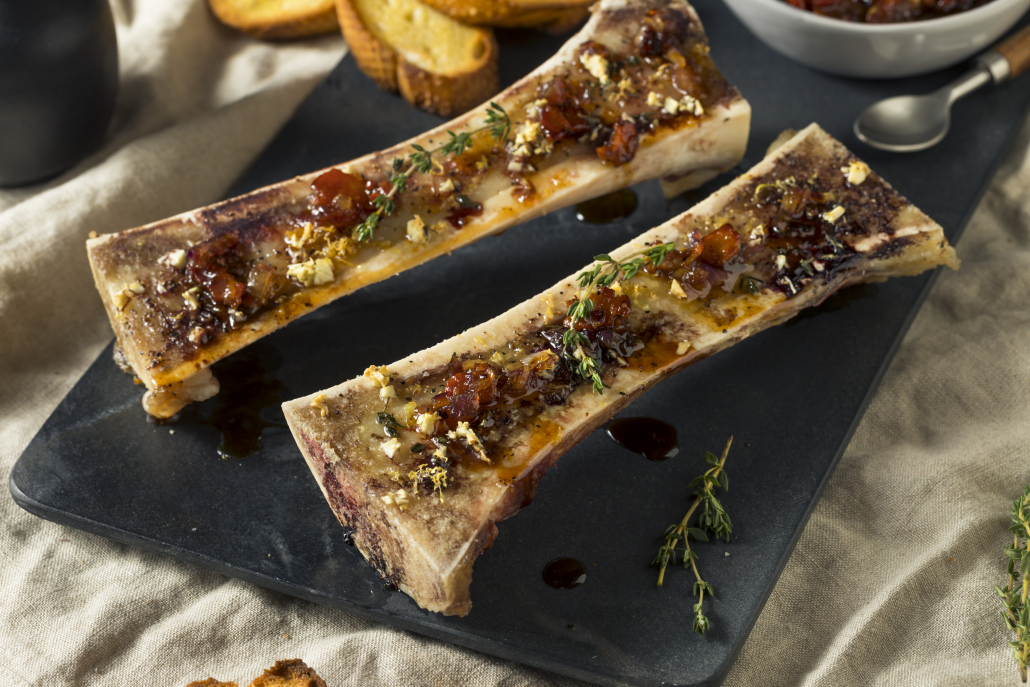
Bonus recipe: Organ meat stew
If you’ve gone through the above organ meat recipes and are still feeling adventurous, dip into this bonus recipe.
It’s actually more of a set of guidelines because virtually any organ meats can be tossed into organ meat stew. Feel free to get creative depending on what you have on hand.
Organ meat stew
This simple-but-satisfying stew is a perfect pick-me-up for those cold, cloudy days.
The ingredients:
- Any organ meats you want
- Soup bones (recommended)
- Oxtail (recommended)
- Apple cider vinegar (optional)
- Salt and pepper to taste
The process:
- Begin by preparing the organs. If you’re including heart, then trim off its connective tissues and vessels.
- Cut organs into 1 inch cubes and add everything to a large pot.
- Season with salt, pepper, and a sprinkle of apple cider vinegar.
- Fill the pot with water or bone broth.
- Bring everything to a boil, then lower the heat down to a simmer.
- Simmer for 2-3 hours. Your stew will be done once the heart gets very tender.
The Bottom Line on Organ Meat Recipes
There’s far more to an animal-based diet than steak and eggs. Organ meats are highly nutritious, packed with hard-to-get bioavailable nutrients, and highly tasty. There’s really no better way to nourish your body than by incorporating these natural superfoods.
Neglecting organ meats is only neglecting yourself. Try one or all of the above organ meat recipes and you’ll see how easy it is to incorporate organ meats into your lifestyle! Though the idea of organs might seem strange at first, it doesn’t have to stay that way. Trying something new, in this case, can have profound effects on your health.













